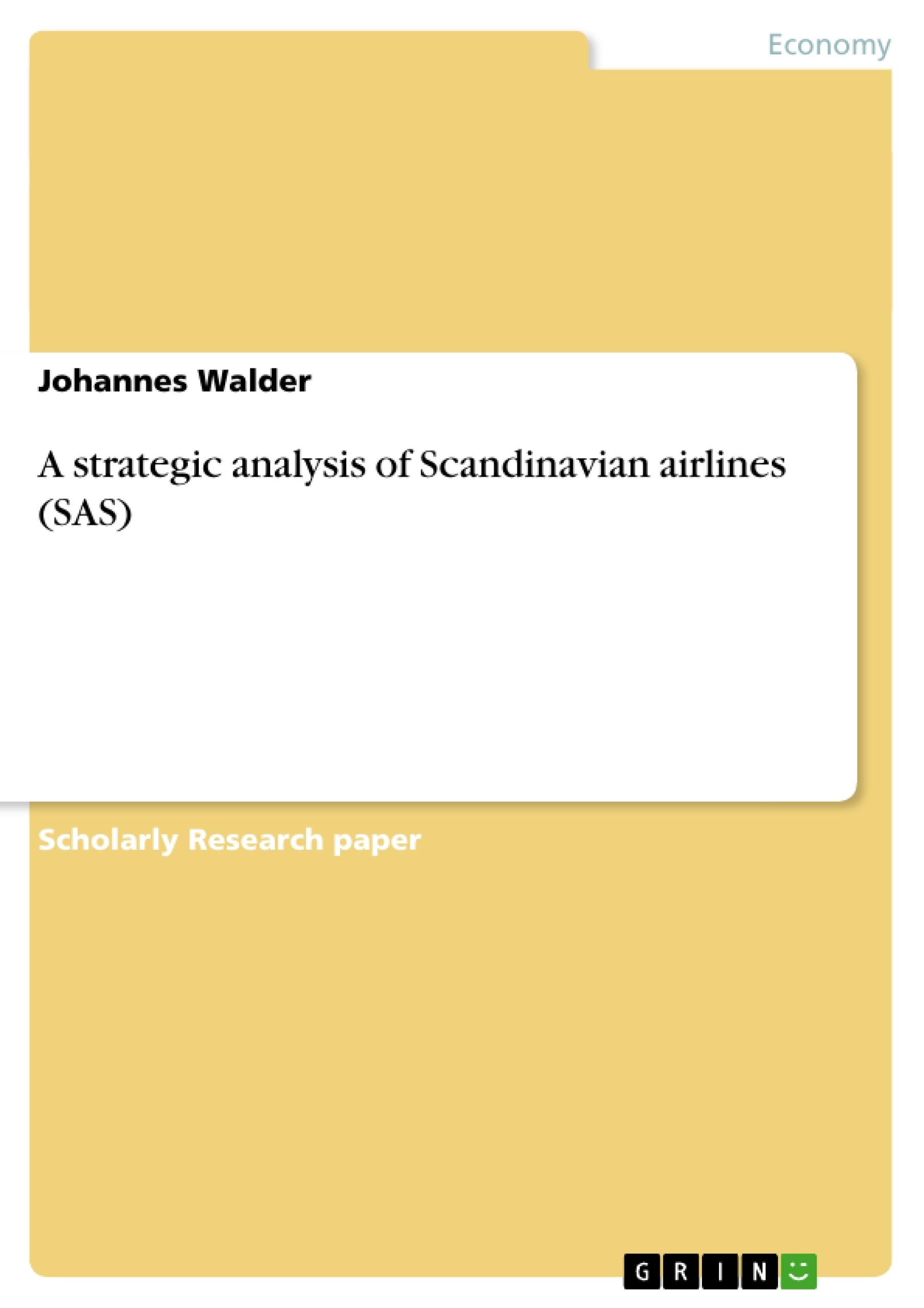Scandinavian airlines, SAS, was founded as a consortium of the national airlines of Denmark, Sweden and Norway in 1946, to operate international flights. SAS has been the first airline to fly a route from Copenhagen over the arctic pole to Tokyo in Japan (www.staralliance.com). However, in 1981 the company have had two years of losses in a row after a long period of positive net profits (Ghoshal, 1988). This essay will examine the change of strategy causing a turnaround that made them profitable again.
Inhaltsverzeichnis (Table of Contents)
- Introduction
- Analysis of the internal and external factors
- SWOT analysis
- PESTEL analysis
- Strategic options for Ryanair
- Cost leadership
- Focus on the domestic market
- Restructuring
- Vertical integration
- The SAS approach
- Implementation
- First wave – restructuring SAS
- Second wave – enhancing the business model of SAS by vertical integration
- Strategy evaluation
Zielsetzung und Themenschwerpunkte (Objectives and Key Themes)
This report analyzes the strategic turnaround of Scandinavian Airlines (SAS) in the early 1980s, focusing on the factors that led to their financial difficulties and the strategic options implemented to achieve profitability again. The key themes explored in this report include:- The impact of internal and external factors on SAS's strategic decisions
- The application of SWOT and PESTEL analysis in identifying strengths, weaknesses, opportunities, and threats
- The evaluation of different strategic options, including cost leadership, focus on the domestic market, restructuring, vertical integration, and the SAS approach
- The implementation of SAS's chosen strategy and its impact on their business model
Zusammenfassung der Kapitel (Chapter Summaries)
The report begins by introducing SAS, its history, and its initial challenges in the early 1980s. The second chapter delves into an analysis of internal and external factors that influenced SAS's strategy, utilizing SWOT and PESTEL analysis to identify key elements of the business environment and strategic capabilities. This chapter explores factors like SAS's reputation for good service, high operational costs, and the increasing demand for flexible flights for business travelers. It also considers external factors like the political stability of Scandinavian countries, the international recession, and the competitive pressure from US carriers.
The third chapter explores various strategic options available to SAS, including cost leadership, focusing on the domestic market, restructuring, vertical integration, and the SAS approach. Each option is analyzed using the VRIO framework, evaluating its value, rarity, imitability, and organizational ability. The report highlights the challenges and potential benefits of each approach.
The fourth chapter delves into the implementation of SAS's chosen strategy, focusing on two distinct phases: restructuring and enhancing the business model through vertical integration.
Schlüsselwörter (Keywords)
This report examines the strategic turnaround of Scandinavian Airlines (SAS) in the 1980s, focusing on the challenges it faced, the strategic options considered, and the implementation of a new business model. Key concepts explored include SWOT and PESTEL analysis, cost leadership, vertical integration, and the impact of internal and external factors on strategic decision-making.- Quote paper
- Johannes Walder (Author), 2012, A strategic analysis of Scandinavian airlines (SAS), Munich, GRIN Verlag, https://www.grin.com/document/212379




